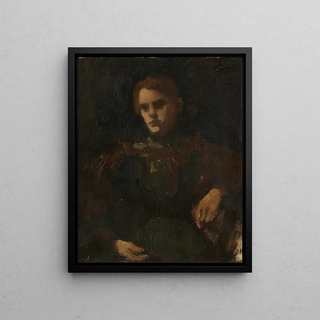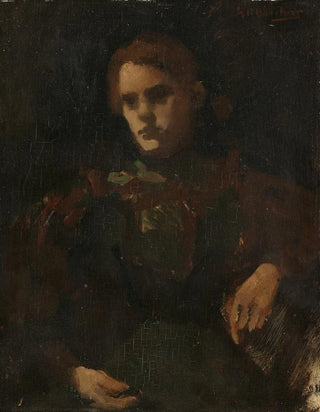Art print | Study after the model - George Hendrik Breitner Source: Reproduction | Étude d'après le modèle - George Hendrik Breitner


View from behind

Frame (optional)
George Hendrik Breitner's "Study after the model" is set within a captivating period of art history where realism and impressionism intertwine. This iconic piece, which captures the very essence of modern life at the end of the 19th century, invites viewers to immerse themselves in a universe where light and movement blend with rare intensity. Breitner, with his unparalleled mastery, manages to immortalize a fleeting moment, revealing not only the beauty of the model but also the vibrant atmosphere of his era. Contemplating this work, one feels the pulse of the city, the hustle of the streets, and the intimacy of shared moments.
Style and uniqueness of the work
The originality of "Study after the model" lies in how Breitner transcends the simple portrait to offer a true study of human life. The composition, both dynamic and thoughtful, highlights the posture of the model, emphasizing natural elegance. The brushstrokes, precise yet fluid, create a fascinating play of light that brings the canvas to life. The color palette chosen by the artist, oscillating between warm tones and cooler shades, evokes an emotional depth that touches the viewer. This painting is not just a representation; it is an invitation to feel, to question the identity of the model and their personal story, all while being rooted in a social context in full transformation.
The artist and his influence
George Hendrik Breitner, an emblematic figure of Dutch art, made his mark on his era with a distinctive style that combines impressionist influences and realism. Born in Amsterdam in 1857, he witnessed the transformation of his hometown into a modern metropolis. His works, often focused on scenes of everyday life, reveal a unique sensitivity to light and color. Breitner also played a crucial role in the development of modern art in the Netherlands, inspiring many artists to explore new forms of expression. His innovative approach paved the way for a deeper understanding of the

Matte finish

View from behind

Frame (optional)
George Hendrik Breitner's "Study after the model" is set within a captivating period of art history where realism and impressionism intertwine. This iconic piece, which captures the very essence of modern life at the end of the 19th century, invites viewers to immerse themselves in a universe where light and movement blend with rare intensity. Breitner, with his unparalleled mastery, manages to immortalize a fleeting moment, revealing not only the beauty of the model but also the vibrant atmosphere of his era. Contemplating this work, one feels the pulse of the city, the hustle of the streets, and the intimacy of shared moments.
Style and uniqueness of the work
The originality of "Study after the model" lies in how Breitner transcends the simple portrait to offer a true study of human life. The composition, both dynamic and thoughtful, highlights the posture of the model, emphasizing natural elegance. The brushstrokes, precise yet fluid, create a fascinating play of light that brings the canvas to life. The color palette chosen by the artist, oscillating between warm tones and cooler shades, evokes an emotional depth that touches the viewer. This painting is not just a representation; it is an invitation to feel, to question the identity of the model and their personal story, all while being rooted in a social context in full transformation.
The artist and his influence
George Hendrik Breitner, an emblematic figure of Dutch art, made his mark on his era with a distinctive style that combines impressionist influences and realism. Born in Amsterdam in 1857, he witnessed the transformation of his hometown into a modern metropolis. His works, often focused on scenes of everyday life, reveal a unique sensitivity to light and color. Breitner also played a crucial role in the development of modern art in the Netherlands, inspiring many artists to explore new forms of expression. His innovative approach paved the way for a deeper understanding of the






